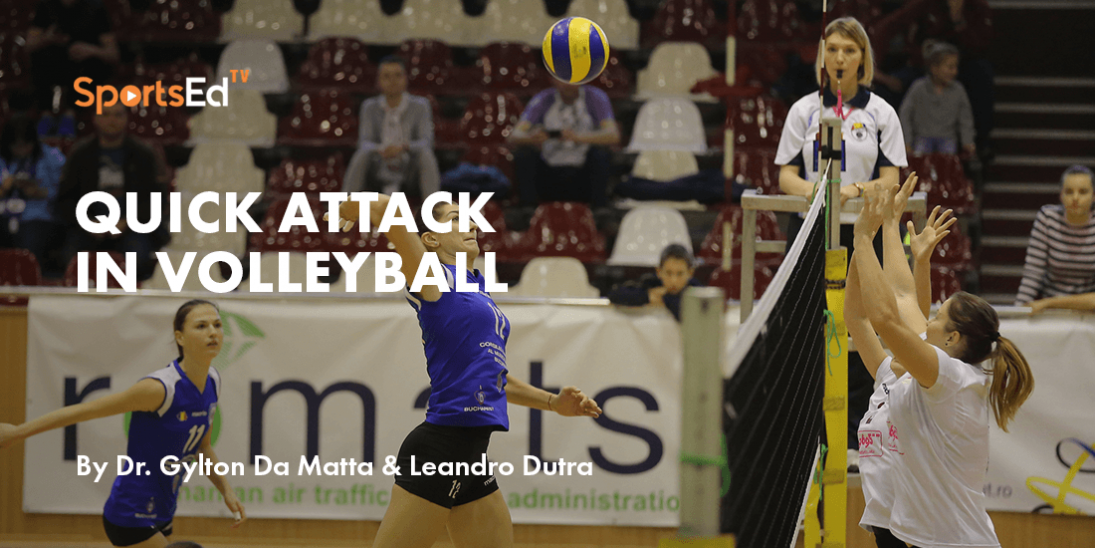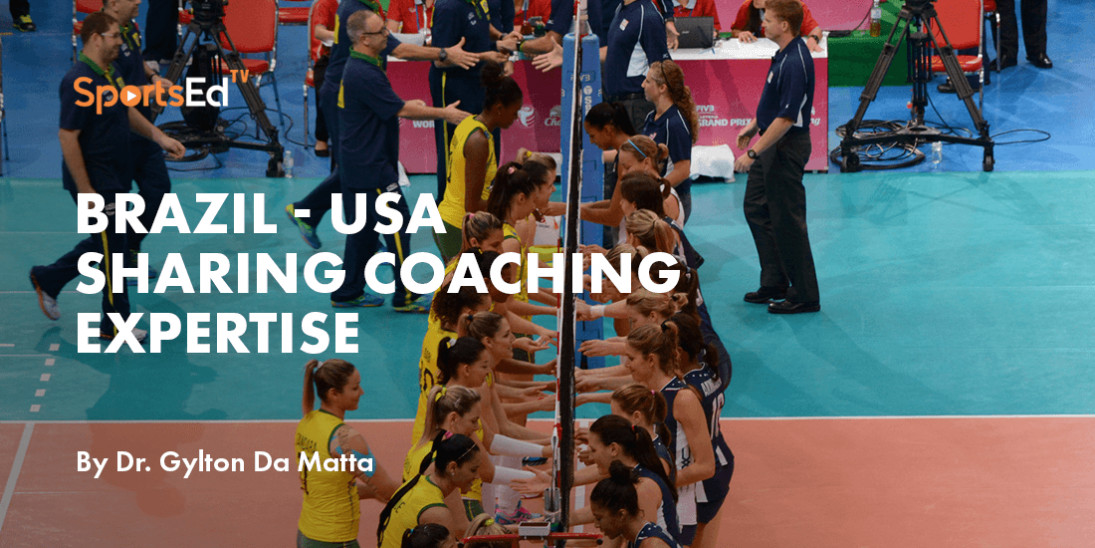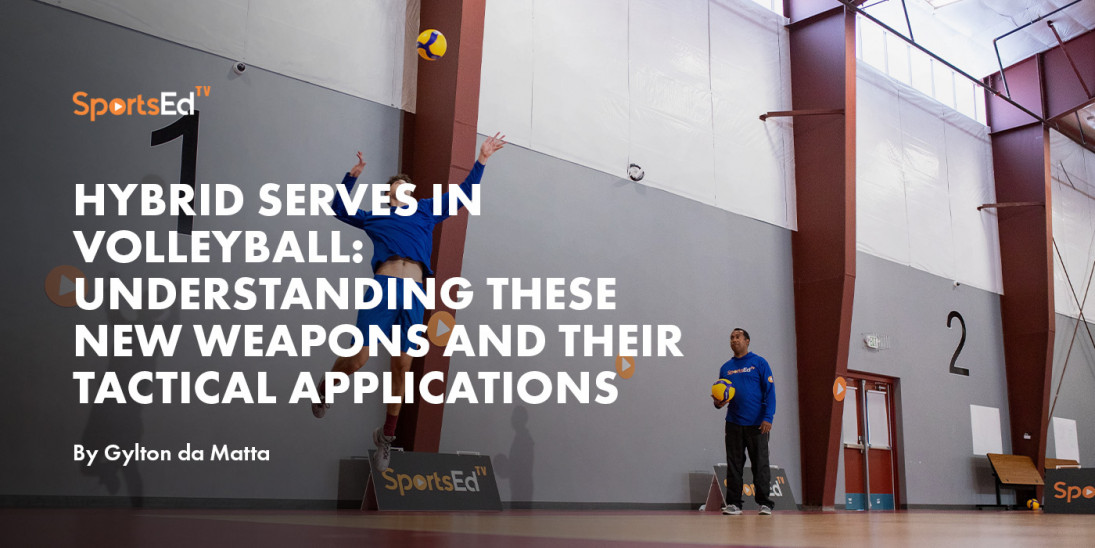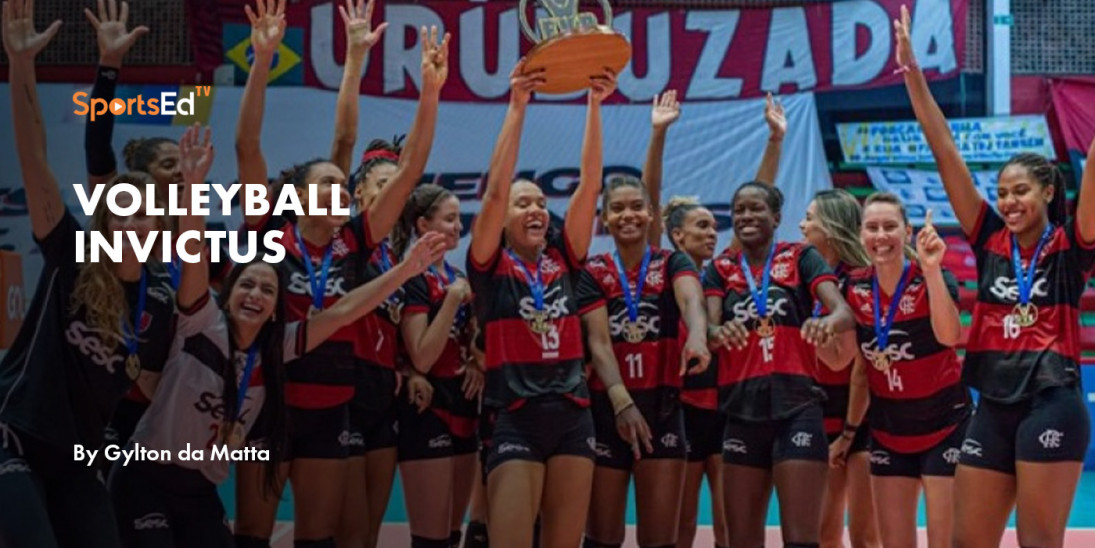Volleyball
Welcome and thanks for visiting...

How do you teach blocking in volleyball?
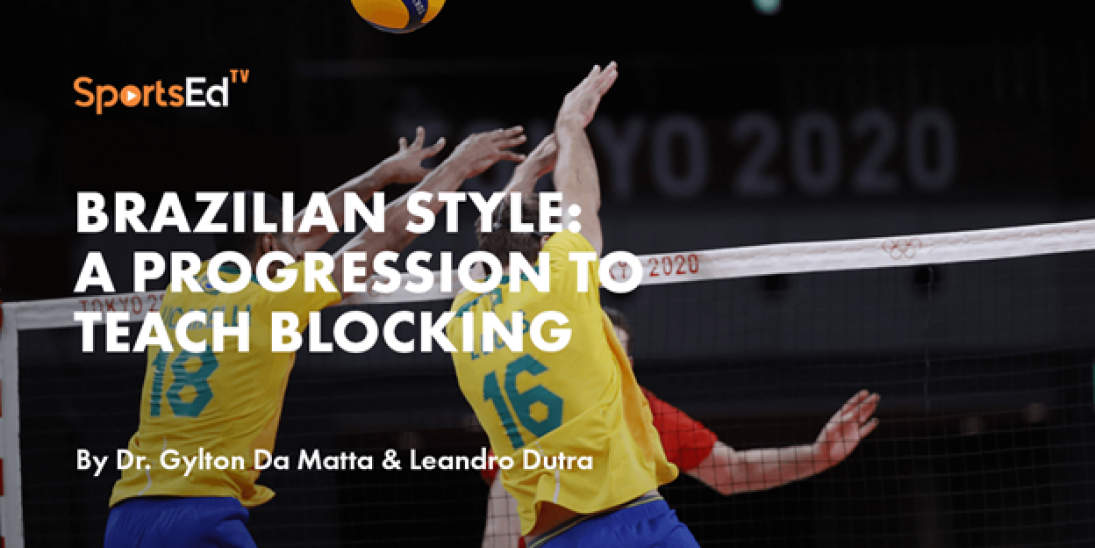
SportsEdTV Volleyball is committed to bringing athletes, coaches, and parents pro-level volleyball education videos for FREE. All levels, anywhere, anytime. Check out our full instructional library and sign up to join our volleyball community!
This article suggests an efficient progression for teaching blocking in volleyball. The foundation of this progression is related to the concept of predictability and unpredictability as highlighted in all of other volleyball expertise publications.
The authors address the notion of simulation towards teaching blocking in real game situations. Thus, for the authors, predictability is when the blocker knows in advance the spot where the ball will be set by the setter and therefore, the blocker knows in advance where he/she will perform the block. On the other hand, unpredictability is when the blocker does not know in advance the spot where the ball will be set by the setter and therefore, the blocker needs to wait for the setter's decision to start the execution of where he/she will perform the block.
In other words, predictability or unpredictability refers to knowing in advance or not where the ball will be set by the opposing setter. The main idea is that through predictable situations the motor pattern can be developed (i.e., technical aspect). In addition, acquire the ability to coordinate displacements/adjustments with the jump and penetrate the hands/arms over the net based on the blocking reach of each player.
Moreover, unpredictable situations allow the development of perceptive aspects and decision-making. These perceptive aspects represent some of the pre-requisites for the execution of a dynamic blocking action which facilitates the action plan, the timing, symmetry, and the coordination within and between limbs.
This is the scenario that approximates the context of the game. However, we believe that a progression from predictable situations towards unpredictable situations is necessary for the success of both motor and perceptive/decision-making aspects.

Figure 1. Foundation of the progression of the Brazilian approach.
Therefore, this methodology consists of four steps to teach the fundamental block. This approach is a Brazilian style of teaching blocking. Although originally developed in Brazil, today all coaches use these concepts. This approach also embraces the whole method of teaching within the spectrum of decision-making adopted by expert coaches.
The first step, perform a predictable action and prioritize individual blocks, i.e, each player performs a blocking action in their role (outside hitter, middle blocker, and opposite/setter). This first step will allow you to start acquiring the necessary coordination of legs and arms to perform the motor pattern of the block. The key point of this first step is to allow the focus of attention on the movement pattern.
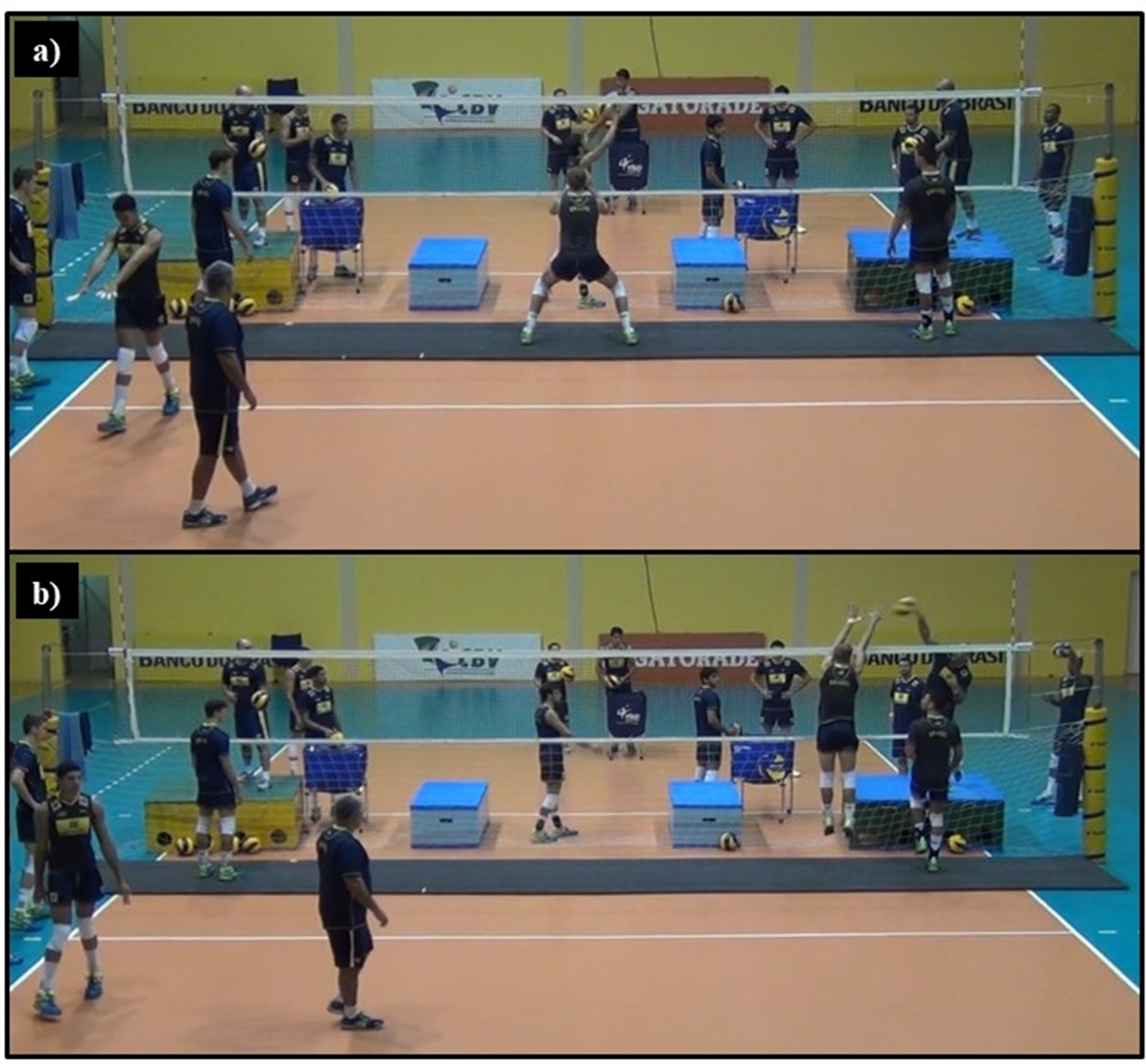
Figure 2. Representation of a drill with the predictable situation. (a) The blocker analyzes the realize of the ball from the setter's hand with the previously known situation. (b) The ball is set to P4 and the blocker knows in advance the spot where the block will be performed.
In addition, in predictable situations, skills should be acquired (for instance, crossover step, open-crossover, shuffle-hop, double shuffle-hop, double shuffle-hop, and other techniques considered relevant for footwork development).
1. OPEN CROSSOVER: WINNING VOLLEYBALL BLOCKING SKILL
The second step is to continue with predictable situations. However, a greater number of actions should be performed (for instance, 2 to 4 actions performed by the same player in sequence). This step will allow stabilizing the motor pattern.
- CROSS STEP BLOCKING: ESSENTIAL VOLLEYBALL BLOCKING SKILL
The third step is to provide an opportunity for a transition. The main idea is to use the first predictable action and the second action with an unpredictable situation. Thus, the aspect of the motor pattern added to the perceptual/decision-making aspect can be acquired through a gradual path.
The fourth step is to use two actions in sequence with unpredictable situations. This step will allow that to initially put into practice the motor aspect that will already be better acquired. In addition, integrating the perceptual/decision-making aspects with the motor aspect to perform the block is the challenge that drills with this characteristic aim to achieve. For instance, unpredictable situations:
- two pin to pin blocking actions;
- the first action blocking the quick ball (front or back) and the second action pin to pin (front or back) (see Figure 3);
- the first action blocking quick ball or pipe and the second action pin to pin (front or back).
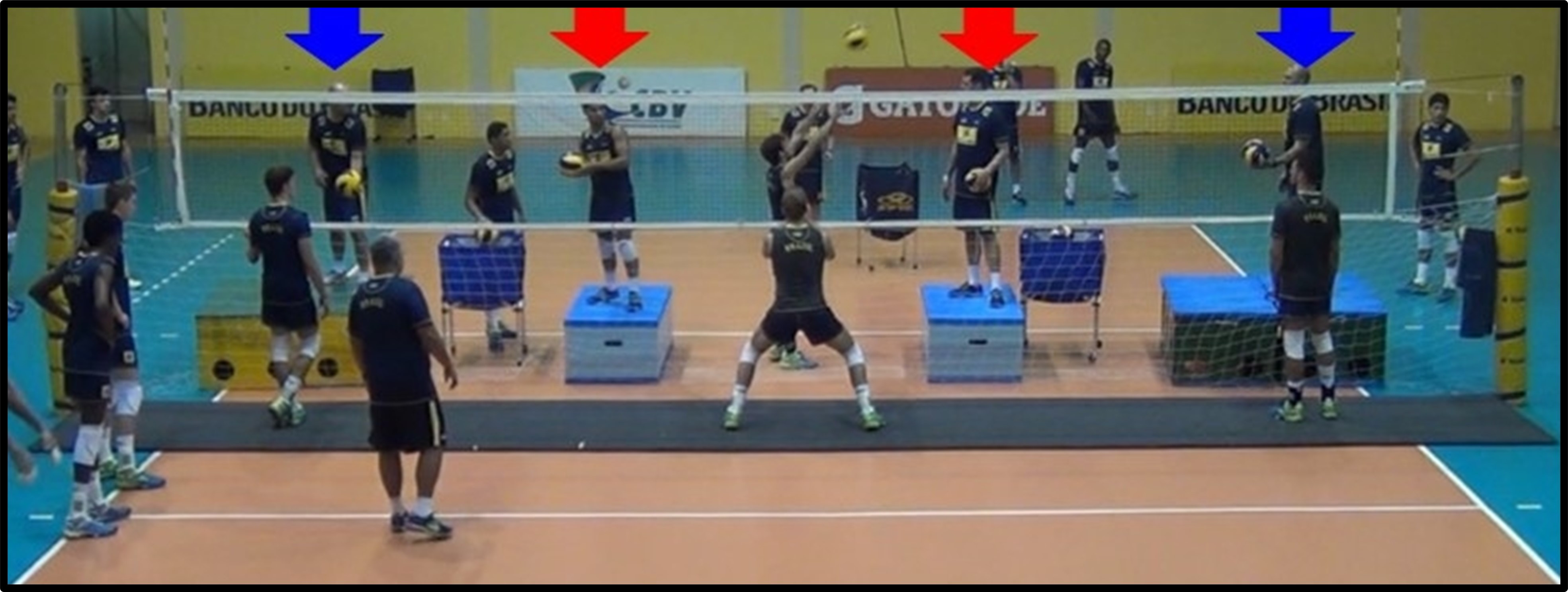
Figure 3. Drill representation (2) the first action blocking the quick ball (front or back) and the second pin to pin action (front or back). Red arrows illustrate quick attacks and blue arrows illustrate front or back balls.
1. ELITE BLOCKING IN VOLLEYBALL
These are some before mentioned unpredictable situations that can be prioritized according to skill level and feature for women's/men's volleyball.
Finally, we consider that the application of these steps should be performed within a 6 on 6 game context. However, the practice of these steps from predictable situations towards unpredictable situations should be repeated throughout a season to maintain the good connection between the gross motor patterns with the fine motor and perceptual aspects of the finesse needed in blocking. We would like coaches to understand this methodology as a two-way process within a continuum starting with predictable situations and moving towards unpredictable situations (i.e., as a bidirectional process). Therefore, drills should be planned in both directions as shown in Figure 4.

Figure 4. Representation of the bidirectional process of this methodology.
Our idea here is not to tell you how to make the best motor pattern or the best technique, but to provide new thoughts on a progression for teaching blocking. Furthermore, we would like to encourage the use of an extra net to prevent injuries during specific blocking practice.
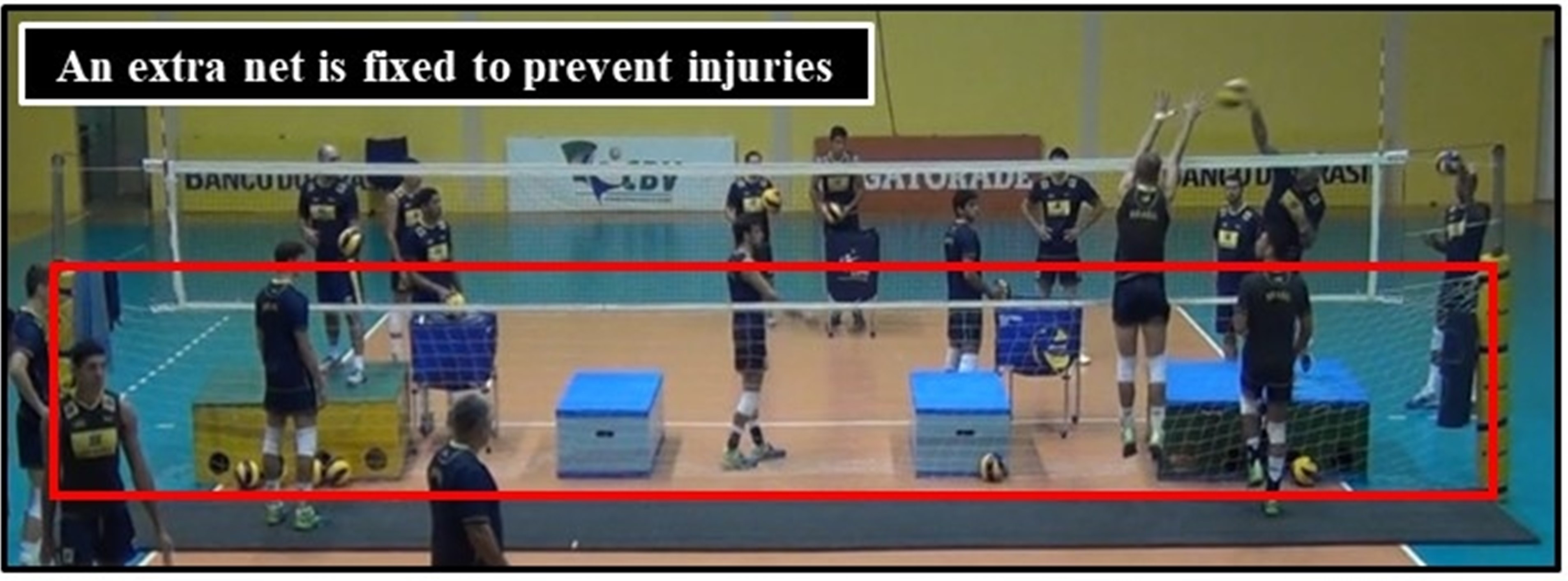
Figure 5. Representation of the extra net fixed to avoid injuries during practice.
This Brazilian approach has at its foundation knowledge in the area of Motor Learning and has been applied in the development of young athletes and we would like to share it with the American volleyball community and SportsEdTv followers. The concept of training blocking is universal across gender and it is multidimensional because it embraces issues in three vectors such as the simple to complex intersecting with the gender and the levels of expertise.

